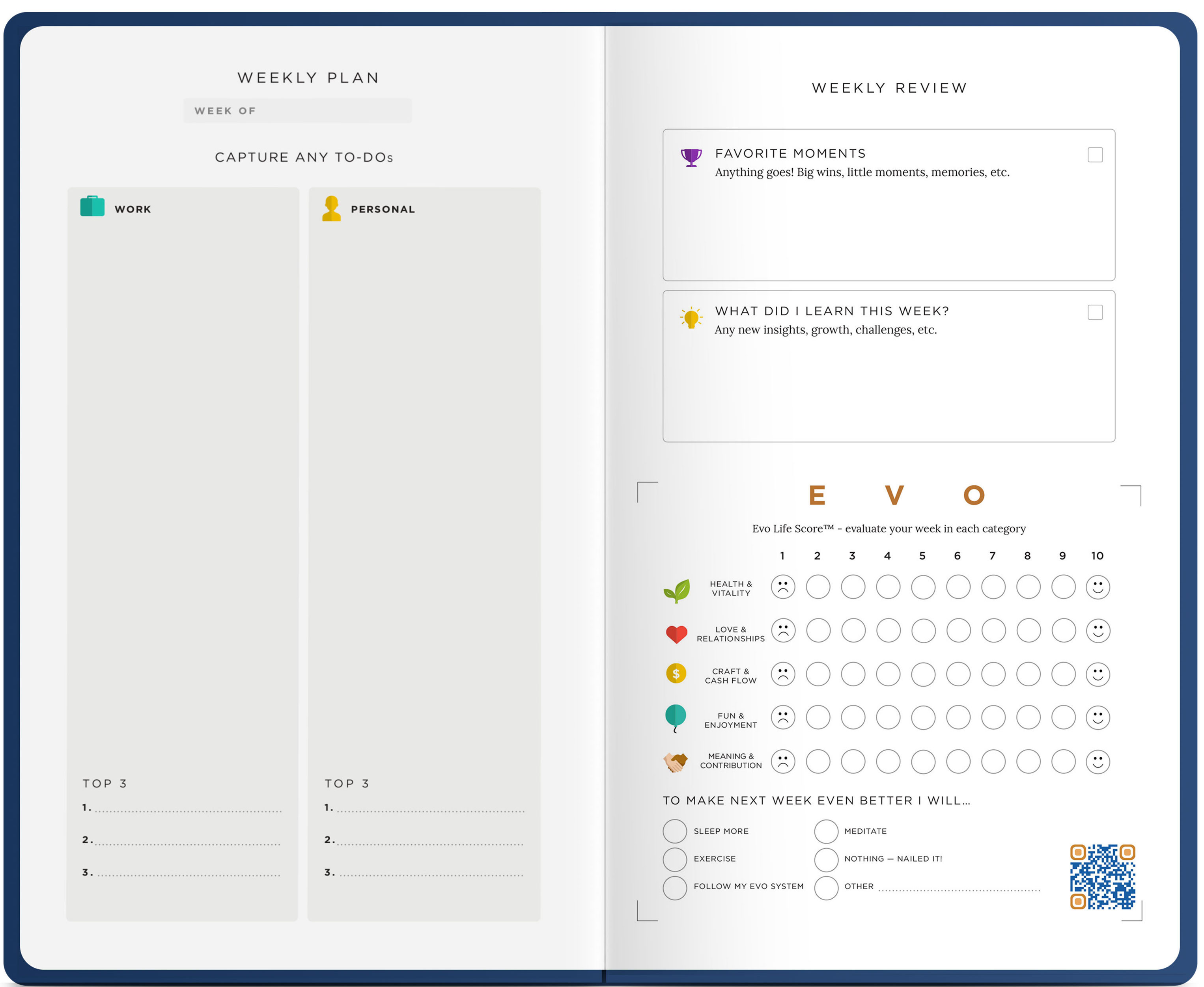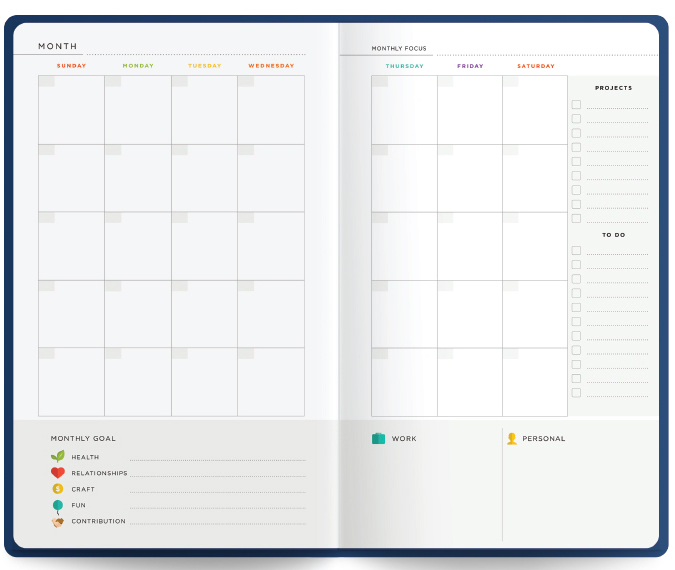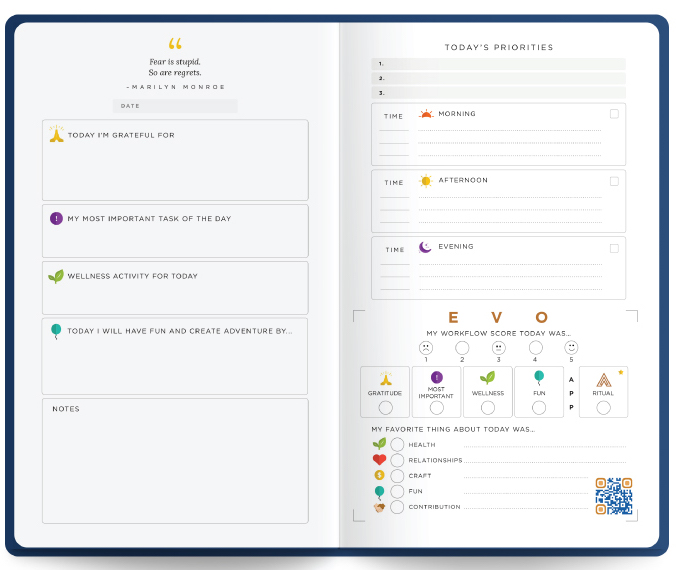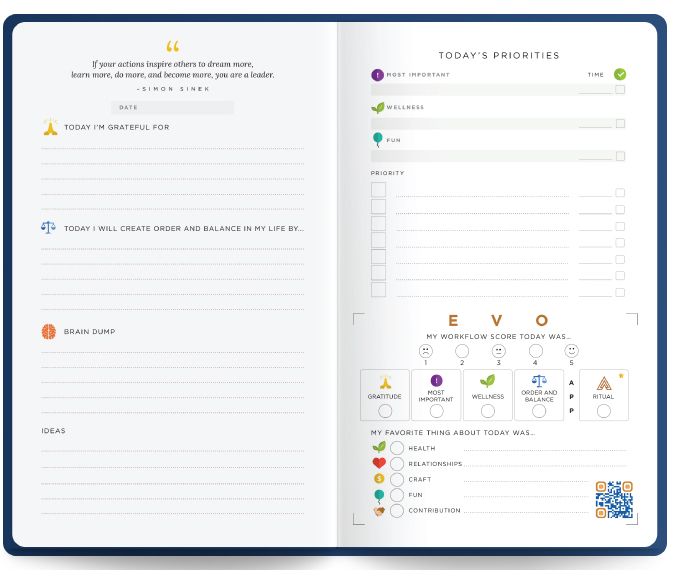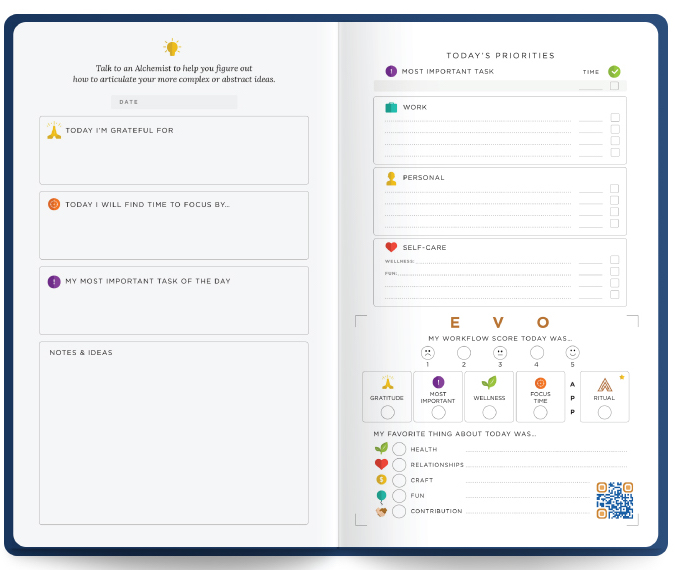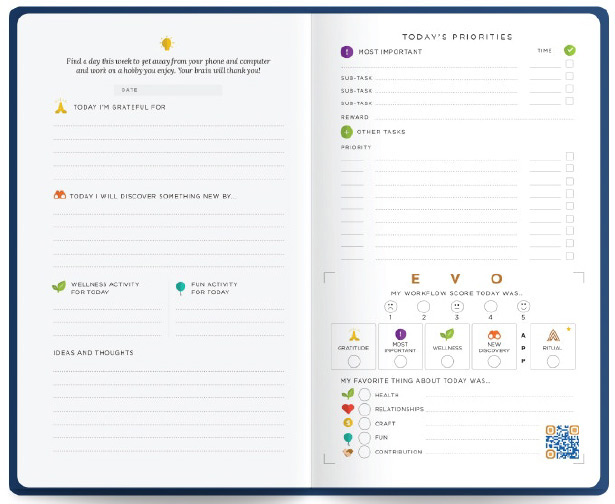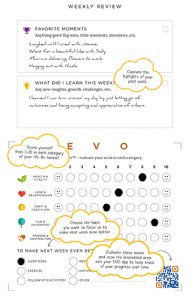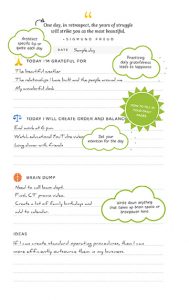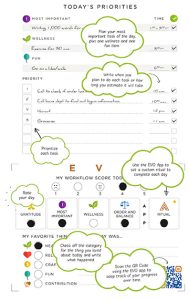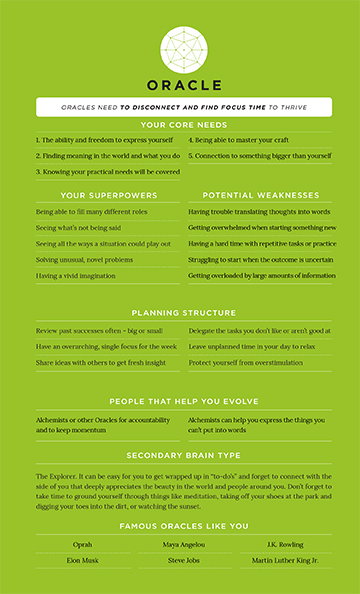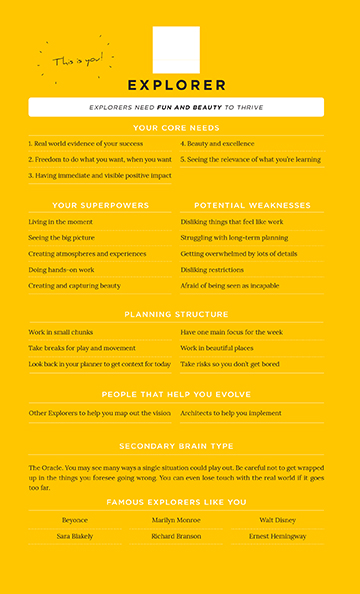BLOG
a
The Anatomy of Your EVO Type, Part III: Balance & Understanding Your Brain Types
by Iris Strauss
6387 views

Photo by pawel szvmanski on Unsplash
This is part of a four-part series to help you understand why we present your EVO Elements Assessment results the way we do. Make sure you read all four parts in order to understand the structure of how your Elements fit together, and the reasoning behind that structure.
Read Part I here.
Read Part II here.
We’ve talked a lot about Brain Type, because those Elements were the ones introduced first in the Brain Type Assessment—the quick, two minute assessment that helps match you with the EVO Planner that best suits your planning style.
But to understand your own unique EVO Type Recipe, you’ll need to understand why each set of Brain Type Elements is paired together, and why their use is essential and inherent to how someone operates when they’re at their best.
Here’s a quick refresher on the two aspects of the Balance Principle. Understanding this principle lays the foundation we’ll need in order to fully understand the reason that we present your EVO Elements in the order we do when you receive your Elements Assessment results…
Feel free to skip these explanations and charts, and head straight down to the *** below if you just read parts I and II of this series.
- Everyone (barring serious mental disorders or disabilities) uses every kind of process—or, everyone is a little bit of everything. Meaning, we have each type of Compass (logically-oriented, and gut instincts-oriented), each type of Brain Type (concrete-focused, and abstract-focused), and everyone has to have a preference for how they interact with others and the external world, as well as how they personally think, feel, and perceive their internal world. See the chart below for a visual reference.
- Balance. EVO Elements and their relationship to each other always represent balance in each aspect of the categories described above—abstract/concrete, logic/gut instincts, internal/external.
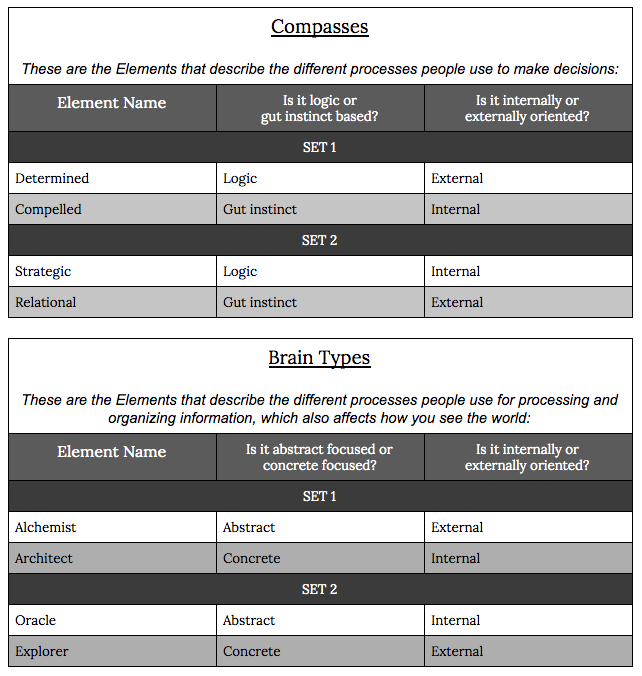
***
Now that we’ve examined why each set of Compass Elements is inherently linked (you can read that in Part II here), let’s look at an example based on Brain Type… This will be especially handy if you have questions about your Brain Type results, either from the basic BTA or the new EVO Elements Assessment.
Remember that each Element set represents all facets of each of the processing styles we’re covering… i.e. Each Brain Type Element is either abstract or concrete and internal or external, and the other Element that it’s linked to represent those other aspects of the Brain Type process (check out columns 2 and 3 in the above charts).
Let’s consider what it might look like if a person was purely abstract—both Oracle and Alchemist—without any way to process tangible, concrete information—no Architect or Explorer Element in sight.
While this person might be brilliant at understanding and perceiving all manner of theoretical information, processing it in the most unique, ineffable ways—they would, unfortunately, have no way to communicate or otherwise express their completely mystical understanding of the universe. They would have no capacity for language—a concrete way we express intangible, abstract ideas…
There are rules and structures that each language abides by. Without them, humans would just be making weird noises and symbols at each other, trying to convey their thoughts without understanding anyone else or being understood by anyone.
They wouldn’t even have the ability to create art inspired by their abstract understanding. While such a completely abstract-oriented person might be able to imagine colors, shapes, and dimensions your average person can’t, they wouldn’t have any way to use their body to dance, mix paints, shape clay, or hell, even scribble a crayon in a notebook. They might as well be in a coma, because they wouldn’t have access to their 5 senses in order to convey anything. They wouldn’t even be able to read this article, or understand someone reading it to them, because in order to learn abstract concepts, we have to interact with concrete things like language.
And on the flip side, anyone who used only concrete, tangible processing—both Explorer and Architect—without any capacity to process and understand abstract information… They’d essentially be a robot. Perhaps capable of doing, smelling, seeing, tasting, speaking… But they would never know why those things mattered. They’d never understand nuance, subtext, or meaning. For example, such a person might be able to read this article—say all the words, follow the structure, and differentiate each shape that makes up each letter. But they wouldn’t comprehend any of the meaning behind the letters.
People generally have the capacity to understand abstract information, and the capacity to understand concrete information. One of those processes will be used as a mental framework for arranging the information perceived inside our minds (internally-oriented), and the other process will be used to interact with the world around us, exchange ideas and information with others, and is essentially the filter through which we see the world (externally-oriented).
This is why it’s important to understand the order of your Brain Type Elements—while some people put more emphasis on the concrete, and others put more emphasis on the abstract, using both types of processing is needed to function as our truest, most optimal selves. Neglecting one of these types of information too much would actually stunt your ability to use the process you prefer.
If you have no way to process and understand your physical, concrete experiences, you would have no way to derive meaning, inspiration, or ideas for improvement from them. And vice-versa—if you have no way to conceptualize abstractions, you’d have no way to understand the context or meaning of your 5-senses, concrete experiences.
A big part of what makes us human is our capacity to both do a thing, and understand why we’re doing it. This is why EVO Elements don’t explain intelligence, why there are no good Elements or bad Elements, and why no one EVO Type is “ideal,” or better than any others. EVO Elements is not really a system with which to categorize people, it is a language to describe the style, or “flavor” of these things we have—the processes we use to understand and interact with ourselves, our world, and those around us.
We hope at this point you have a deeper understanding of why we fit them together in the way we do, and why each set is related—like two sides of the same coin.
The next and last installment of this series will help us put all these concepts together, in order to gain a deeper understanding of our own unique EVO Element “recipe,” as well as all the other EVO Types. Read Part IV here.
